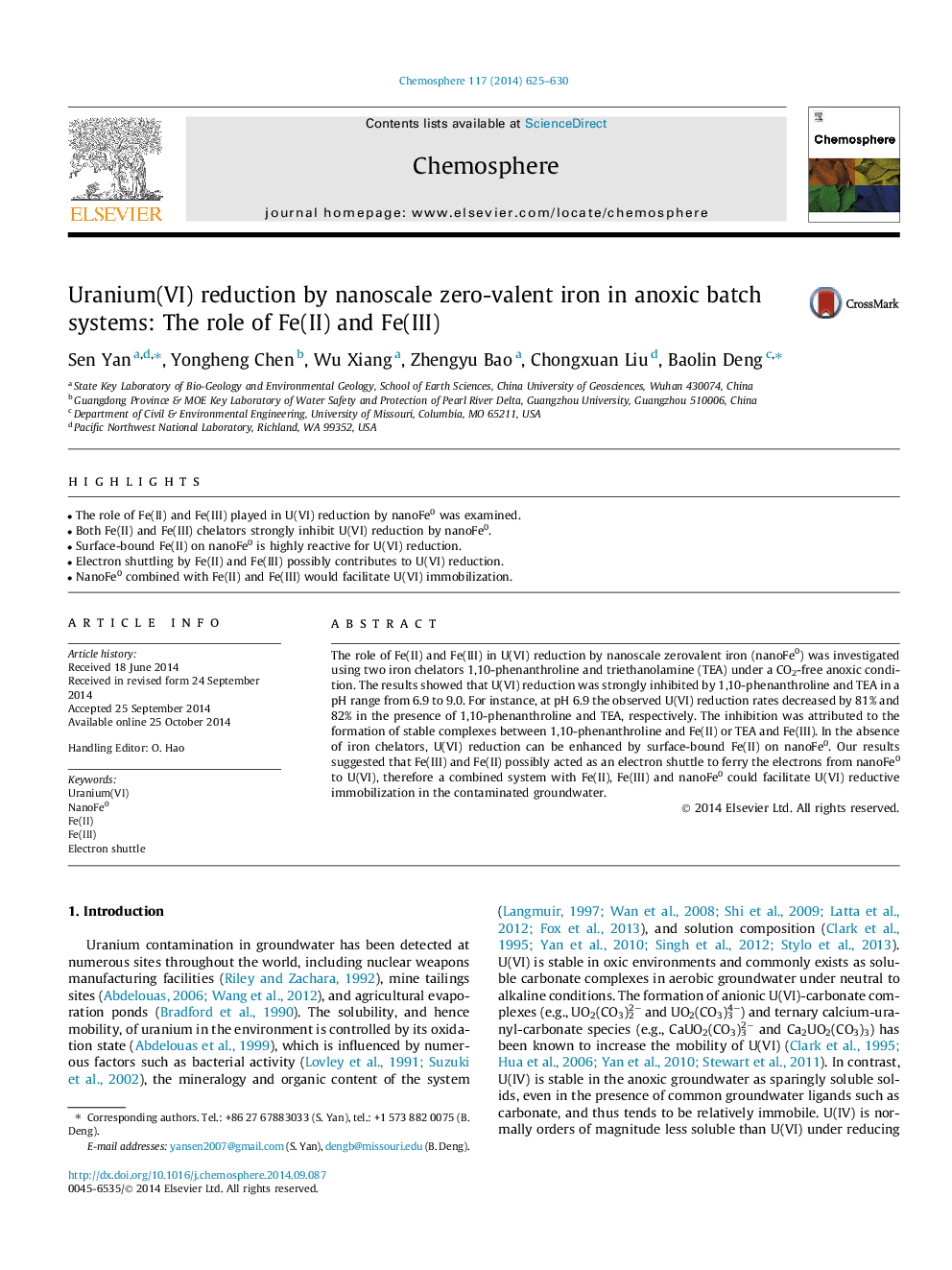| Article ID | Journal | Published Year | Pages | File Type |
|---|---|---|---|---|
| 6308524 | Chemosphere | 2014 | 6 Pages |
Abstract
The role of Fe(II) and Fe(III) in U(VI) reduction by nanoscale zerovalent iron (nanoFe0) was investigated using two iron chelators 1,10-phenanthroline and triethanolamine (TEA) under a CO2-free anoxic condition. The results showed that U(VI) reduction was strongly inhibited by 1,10-phenanthroline and TEA in a pH range from 6.9 to 9.0. For instance, at pH 6.9 the observed U(VI) reduction rates decreased by 81% and 82% in the presence of 1,10-phenanthroline and TEA, respectively. The inhibition was attributed to the formation of stable complexes between 1,10-phenanthroline and Fe(II) or TEA and Fe(III). In the absence of iron chelators, U(VI) reduction can be enhanced by surface-bound Fe(II) on nanoFe0. Our results suggested that Fe(III) and Fe(II) possibly acted as an electron shuttle to ferry the electrons from nanoFe0 to U(VI), therefore a combined system with Fe(II), Fe(III) and nanoFe0 could facilitate U(VI) reductive immobilization in the contaminated groundwater.
Related Topics
Life Sciences
Environmental Science
Environmental Chemistry
Authors
Sen Yan, Yongheng Chen, Wu Xiang, Zhengyu Bao, Chongxuan Liu, Baolin Deng,
